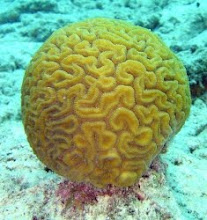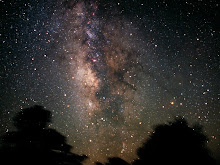Dynasties were human constructions so large they became naturalized phenomena in secular evolutionary development. Secular evolutionary development was the rate at which evolution took place - glacially slow, like molasses in January for half a billion years.
The pyramids changed all that. The pyramids - which sprouted all over the earth around the equators - were and still are durable, crystal-like forms constructed of massive stone blocks and were large as mountains to many creatures and human beings too. They were presented obviously a fundamentally ordered, non-chaotic principle in their forms. They changed the instincts of every creature that became transfixed by the new shapes.
The dynamics of human civilization - and, led by human beings, of the activities of many other species - were altered by the pyramids. These new forms spanned great distances, relativistically large distances so that even though the principles of modern relativity were unknown, those attributes of living organisms that were inherently limited by relativity, such as size and speed, were challenged by the new constructions. Why were they different from the world which had always existed?
To human beings during the time in which the pyramids were being construction, it was clear where they came from. It was not necessarily clear to those who toiled why they were different, but they knew the construction was by human beings and they lived under a regime that decreed it was because of human beings they were built.
Lesser works were often constructed after the largest of the pyramids had been dragged into existence. Yet the smaller constructions, whatever they were, did not span as much time in their completion, and so it would be a common experience that the pyramids had existed long before a worker and the ancestors he knew had lived; he would do some kind of work whether it was in the fields or towns; and after he had passed and his children and perhaps his children's children came into being, any project he was working on would be completed, and then it would be understood that the Pyramids which had preceded their construction were destined to exist in the future as well. There would be a resting phase, a lapse during which society would retreat to agriculture and it is almost certain that some protested what they saw as 'decay' while others welcomed the resting phase, called 'hiatus' as a chance to recover virtue, strength, peace, nature, instinct, resonance with life, and other valued qualities of tranquility.
It gradually came to pass that after several such cycles of dynasty and hiatus, that different kinds of rulers existed from one hiatus, or as we would call it, 'period of development' and another. These periods of development existed as separate periods of a kind of rule that was for several cycles familiar in kind. Yet as time passed, differences appeared in the forms of rule in the periods of dynastic activity. In some there were pharaohs, in others, kings, in others, emperors. Different patterns of dynasty and hiatus appeared also in different parts of the world. As a result, the general pattern of emerging thought, determination, planning, construction, culmination, cresting or triumph or dominance, flourish, and finally a period in which it was understood that something had come to pass while yet another future was beginning to precipitate, crystallize, catalyze and emerge within the old.
The idea became persistent that "dynasty" is kind of a durable container in which one or another form of society, rule, government, or civilization exists; and these may include any of several different powerful, highly respected forms: theologies, autocracies, empires, kingdoms, democracies, principalities, sheikdoms, and communism as well as others not mentioned here, perhaps others not yet dreamed, come into existence, endure for a long or short time, and then pass.
Given the vast span of natural history, it is at once valuable to be entirely optimistic about human destiny and at the same time see that many things in human activity evolve visibly - slowly or rapidly they appear; some leave vestiges or parts that endure much longer, some of their aspects disappear quickly. In time, those longest lived become sufficient to sustain civilization in themselves, and the nature of civilization becomes longer-term.
At the present time, the Earth has just completed one long dynastic goal - to reach the moon. Other goals have been completed, such as domestication of animals and a naturalized yet governed agriculture, water distribution, voting, money, medicine, flight and other transportation, communications and so on. It is not quite known yet, with the attainment of the Moon being completed, what is now to transpire. Perhaps the constructions necessary to reach the moon are to be viewed as awkward, groping and significantly preternatural diversions from the destiny the planet is inevitably to pursue as time passes with the Moon having footsteps upon it. In that case, it can be expected that important changes are to occur, as the planet reviews itself, takes stock, and devolves what it devolves.
Bearing in mind the number of casualties in war and the losses of nonhuman life, that is certainly possible. It is easy to imagine, now after the face, easier ways to have reached the Moon. For instance the nature of truth is now known not to require human life with which to determine the "moment of truth". Thus it could have been concluded long ago that even with fiery rockets, it is never necessary to burn human beings or other living organisms to fly to the Moon. The origin of the error is not clear; it may have occurred in pre-Cambrian seas with the evolution of cephalopods, the octopuses and squids that use momentum conservation as a form of propulsion.
Slavery is another matter. Entirely alongside in evolution, slavery was ancient, practiced at least by ants. Slavery was not a sup rise in ancient Egypt, and it need not and should not be pretended that the conditions of labor were extremely harsh and constraining. Neither were they a sup rise. With no knowledge about any other kind of cooperative large scale work, simple illiterate human beings would not have protested. How could they? That set the pattern of labor for thousands of years. Yet the cost of slavery was always high. Slaves had to be fed and housed, though the societies were probably not far from assuming that anybody, even a slave, would find some place to shelter even if it was a hovel - as long as it was not the master's house.
Money was unknown, and so it was necessary to keep slaves. Breaking them in was essential and might involve years. Slaves were not easily traded where barter was the only form of commerce, so that trading slaves was not something one did frequently. They had to be kept, as well - that is, retained, constrained or in some other way prevented from leaving or, if they did go, they had to be persuaded to return. Slave societies had their grotesque forms of expertise.
What seems to have emerged is that the development of increasingly sophisticated economic activity gradually led to the realization of hired labor. This obviously spanned a great deal of time - thousands of years. The very earliest coins were rare and hand-made; only the wealthy and powerful had them and in part they were wealthy and powerful because they controlled the means of producing and keeping money. That is a serious problem today even as distributed forms of economic activity are being rapidly improved.
It seems to be distinctly money that was the key and catalyst to the overseas transport of human beings as slaves. Freed of barter, or using a mixed barter and money pattern of trade activity, it was no longer necessary for the buyer of a slave to be given on the spot an agreed upon quantity of other goods. Slaves could be taken from Africa in return for - what? Were they taken by sheer power? Not mostly. They were taken in return for manufactured goods - iron pots, knives and spears; guns; alcohol; cloth manufactured goods and so on. The slaves could be transported to another place, which at that time included the Americas, and they could be paid for with what was produced in the Americas. Those goods were then transported to Europe, and the shipping costs incurred by the shipping company cleared at the bank with money. Money could then be used to purchase more goods that could be taken to Africa and used to buy slaves. That grisly cycle is important to mention occasionally because it helps weather slavery down into oblivion, like recovering a little more sanity by recalling a painful event to release the distorted energy for something more useful like happiness.
Money and its accounting, substance, keeping, distribution and use, have increased in sophistication, completeness, closure, extent, value and quality in fits and starts since seashells and beads were the only money. It was about the time of Rome that money reached a distinctly transcendental quality. After the first millennium, money was rapidly equated with writing, literature and hence with authority. Money became controlled by abstracted authority, and the contests for power between kingdoms and other powers for authority, including especially authority over money, are important parts of history. The eventual sophistication of money became nearly Godlike, and it is not surprising that the dollar bill depicts the Eye of God floating over a Pyramid.
This is deep stuff. The pyramids at once held transfixed the natural eye, the eye of Nature's God which would have occurred as soon as the Pyramids were recognized as the same as mountains in their size and massive structure, yet different in that they presented a human-originated civil and structural order that is far from nature's relatively chaotic and unprincipled order. For instance the pyramids do not have S-shaped winding river channels running down their sides. That was the condition of the pyramids six thousand years ago.
Yet the dollar presents something else: the Eye of God by now has become the eye of One God - the monotheistic God which, or rather who, was discovered in Egypt of about 2,000 B.C., four thousand years ago, was forgotten in the tumult of pre-authoritarian society, and was remembered in the Roman Empire - as under Marcus Aurelius - and then reaffirmed in 1,000 A.D. when the Roman Authority with its extensively written Latin literature had easily spanned and lived a thousand years. The sixteenth century begs desperately to be mentioned and will in time, but by the time of the American Revolution in the eighteenth century, the 1776 engraved in Roman numerals at the bottom of the pyramid with the Eye of God on it clearly meant that it was the Eye of the One God - the One True God, that is now comprehended in modern theology throughout the world.
Not only is that number, MCMLXVII in Roman Numerals a positive definite representation of counting units one by one, it is in its inverse a definition, spanning over a thousand years, of what the idea of One means. The continuous literate and authoritarian record of civilization, to however far back in history it can be traced, asserts and provides for mankind and for the planet Earth (space aliens or no) a determinate kind of ordering of temporal events that stands alongside calendars and clocks as the time domain now, of evolution in Earth's future.
Now it is true that important political instruments in history have condemned slavery, but the problem emerging now is that empires and other political forms are able to extract heartbreaking toil and distraction from human beings who are perfectly capable of living in freedom and liberty, by the simple device of ensuring that everybody is free to use money, and then by sampling statistics, determining what people will buy or sell in return for their labor and toil.
Human beings are blessedly simple creatures, who would live in blissful happiness if they were merely free. Yet money makes it possible for those who control it to statistically enslave a sufficient number of workers, so that a regime's sometimes demonic toil can be accomplished without actually keeping the slave as a captive. If a person is willing to keep a job, whether he is happy or not is no longer the determinant. A sufficient amount of money can purchase his time and if he quits, another person can be found to work that shift.
These are exciting times. By now, robots are being sold by the millions, designed mostly to perform the very acts that were the most degrading and dehumanizing - sandblasting rust off steel, spray painting or working in sewers. Robots have saved and rescued thousands or more workers who were put to those nauseating, toxic, deafening environments. It is time for labor to present the grateful side of its stand for robots; that would be a serious contribution to robot development of a kind that will truly free human beings from enslavement.
Except, of course, by robots.
Subscribe to:
Post Comments (Atom)







No comments:
Post a Comment